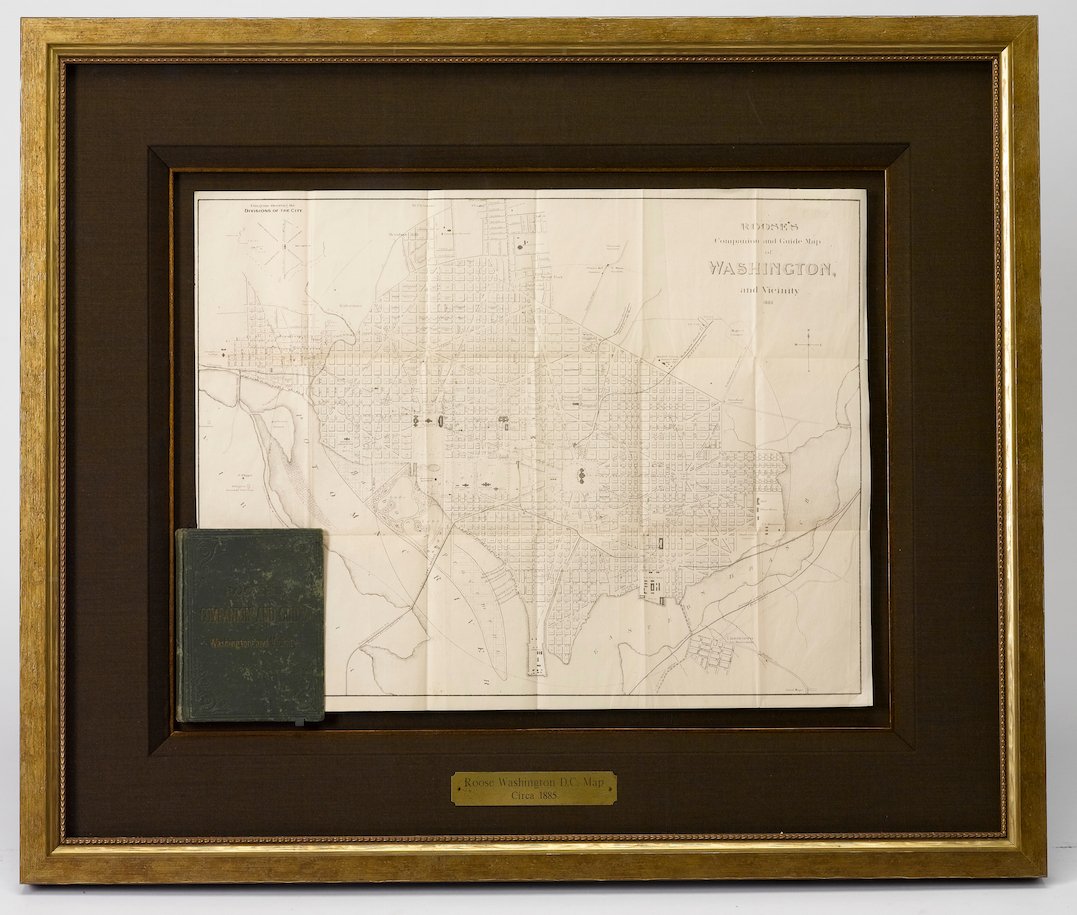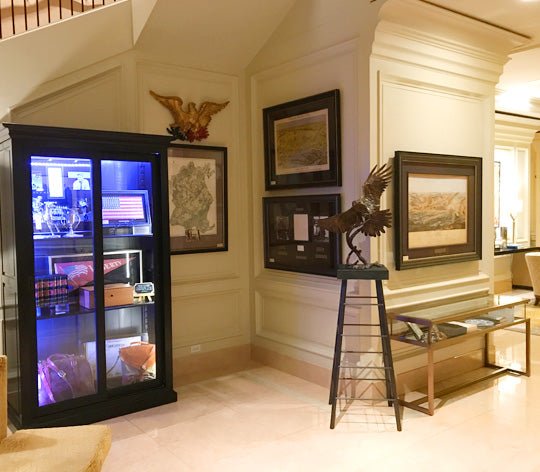WWI Sweetheart Silks
Ever since we displayed this sentimental and patriotic WWI handkerchief on our walls in our Washington DC store, we have been asked countless times to tell the story behind this unique item. So today we are exploring the tale behind this beautiful war memorabilia.
Referred to as “sweetheart silks”, these printed handkerchiefs were given from soldiers to their partners before leaving for war. More sentimental than functional, the handkerchiefs were printed with historical war scenes, love ballads or poems popular to the time, and depictions of couples kissing or embracing.
This particular silk has been printed in blue ink, at center, with a soldier kissing his sweetheart goodbye. In the background are a spread-winged eagle, with a trailing ribbon inked “The Farewell” in its beak, the American flag with 48-stars, and two vignettes of soldiers “Firing At The Enemy” and soldiers “In Combat”.
Printed below the couple is the following poem:

At each corner is a 48-star American flag, printed in blue and red. In 1912, following the admission of New Mexico and Arizona to the Union, two additional stars were added to the official U.S flag design. President Taft's Executive Order No. 1556, issued on June 24, 1912, standardized the canton of the stars on the U.S. flag to 6 even rows of 8 stars. The flag design is completed with 13 alternating red and white stripes, representing the original thirteen colonies. The 48 star flag flew from July 4, 1912 to July 3, 1949, a span of 47 years.
The handkerchief has border of other nations’ flags- fifty in total. The flags are arranged alphabetically from the top left corner. The flags are printed in full color, and they have some now obsolete flags and dated country names, including Siam, Corea, Persia, and San Domingo. The whole design is enclosed in a thin blue line border.
If you want to learn more about this particular silk handkerchief, feel free to visit our Washington, DC store to see or purchase it in person.






